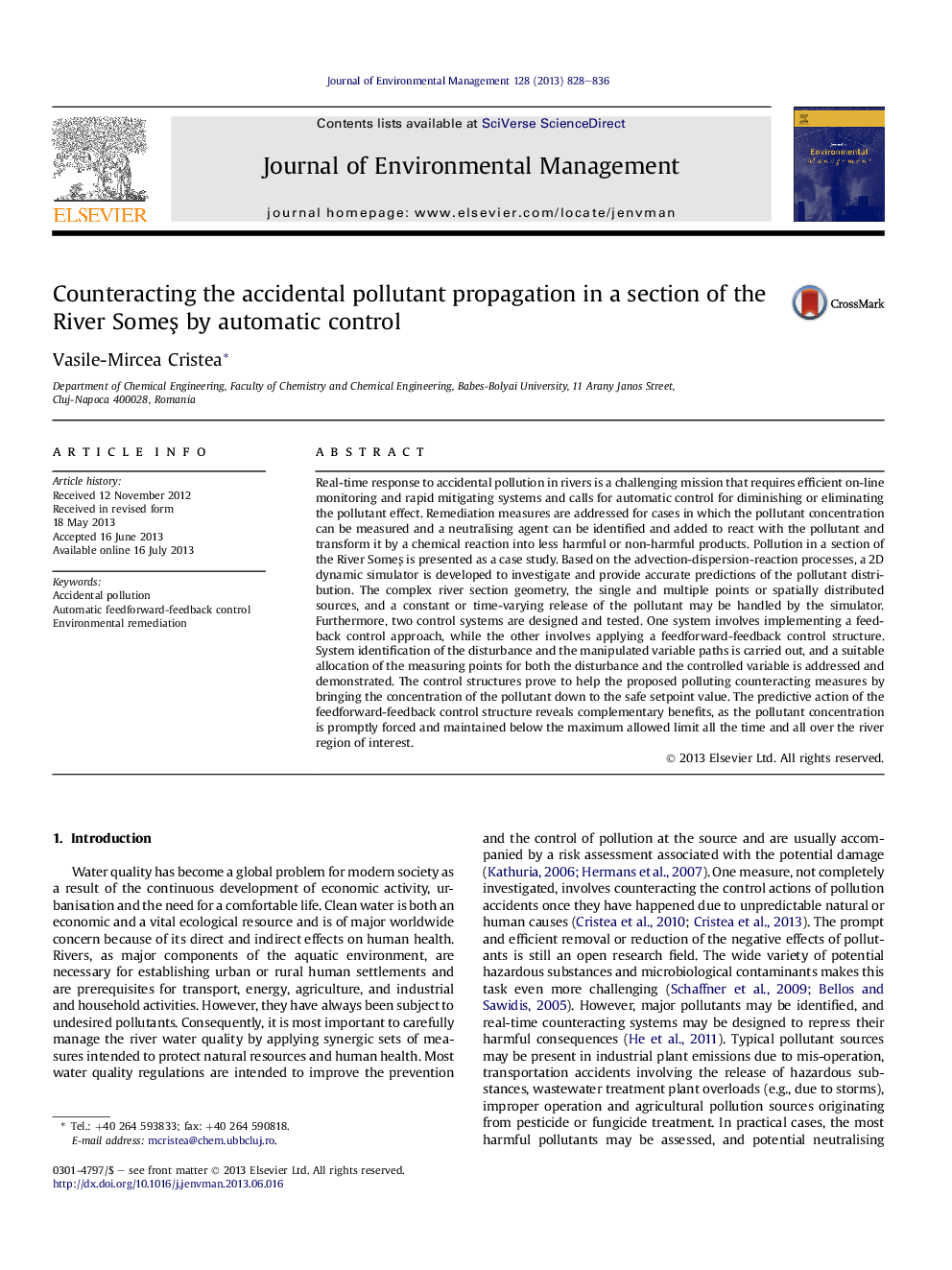| کد مقاله | کد نشریه | سال انتشار | مقاله انگلیسی | نسخه تمام متن |
|---|---|---|---|---|
| 7484560 | 1485284 | 2013 | 9 صفحه PDF | دانلود رایگان |
عنوان انگلیسی مقاله ISI
Counteracting the accidental pollutant propagation in a section of the River SomeÅ by automatic control
دانلود مقاله + سفارش ترجمه
دانلود مقاله ISI انگلیسی
رایگان برای ایرانیان
موضوعات مرتبط
مهندسی و علوم پایه
مهندسی انرژی
انرژی های تجدید پذیر، توسعه پایدار و محیط زیست
پیش نمایش صفحه اول مقاله

چکیده انگلیسی
Real-time response to accidental pollution in rivers is a challenging mission that requires efficient on-line monitoring and rapid mitigating systems and calls for automatic control for diminishing or eliminating the pollutant effect. Remediation measures are addressed for cases in which the pollutant concentration can be measured and a neutralising agent can be identified and added to react with the pollutant and transform it by a chemical reaction into less harmful or non-harmful products. Pollution in a section of the River SomeÅ is presented as a case study. Based on the advection-dispersion-reaction processes, a 2D dynamic simulator is developed to investigate and provide accurate predictions of the pollutant distribution. The complex river section geometry, the single and multiple points or spatially distributed sources, and a constant or time-varying release of the pollutant may be handled by the simulator. Furthermore, two control systems are designed and tested. One system involves implementing a feedback control approach, while the other involves applying a feedforward-feedback control structure. System identification of the disturbance and the manipulated variable paths is carried out, and a suitable allocation of the measuring points for both the disturbance and the controlled variable is addressed and demonstrated. The control structures prove to help the proposed polluting counteracting measures by bringing the concentration of the pollutant down to the safe setpoint value. The predictive action of the feedforward-feedback control structure reveals complementary benefits, as the pollutant concentration is promptly forced and maintained below the maximum allowed limit all the time and all over the river region of interest.
ناشر
Database: Elsevier - ScienceDirect (ساینس دایرکت)
Journal: Journal of Environmental Management - Volume 128, 15 October 2013, Pages 828-836
Journal: Journal of Environmental Management - Volume 128, 15 October 2013, Pages 828-836
نویسندگان
Vasile-Mircea Cristea,